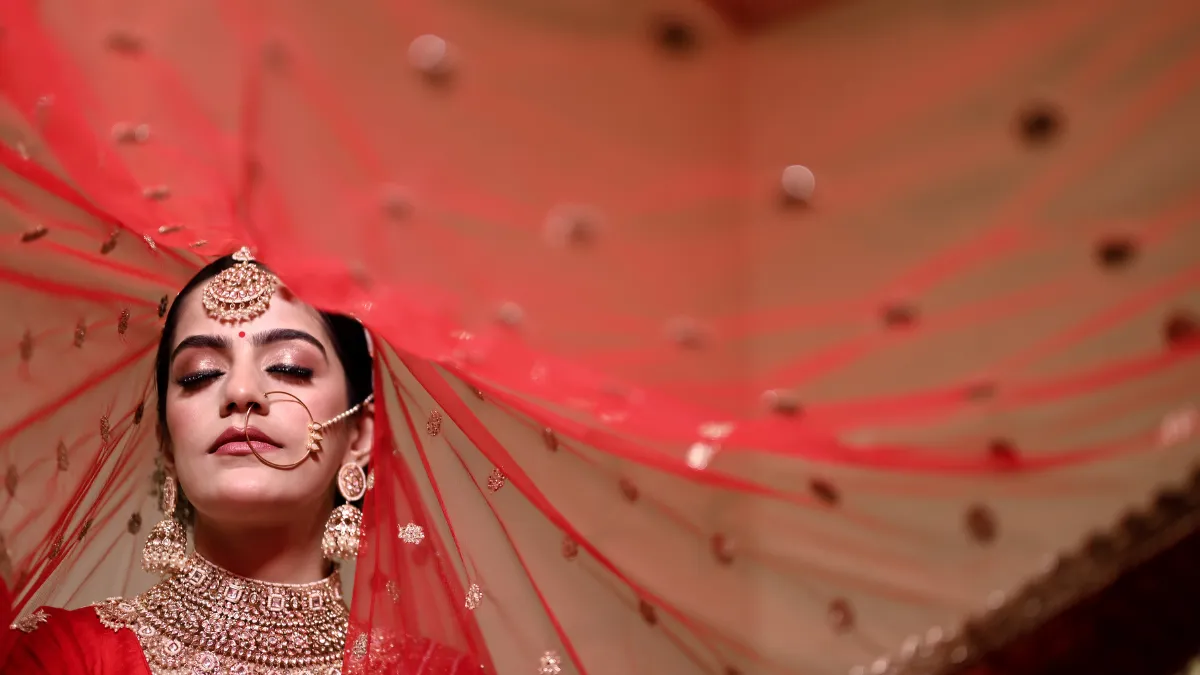On September 24, 2023, Bollywood actress Parineeti Chopra and Aam Aadmi Party youth leader Raghav Chadha got married at Udaipur’s Leela Palace. It was a grand wedding attended by various celebrities from the film and political world. Prior to this, Siddharth Malhotra and Kiara Advani’s wedding created much buzz on social media for over a week. Vicky Kaushal-Katrina Kaif, Ranbir-Alia, Isha Ambani, and other famous personalities from entertainment, business, and politics have had extravagant weddings that have been a topic of gossip among people.
Media Coverage Creating Mass Pressure
The media has covered these weddings exclusively and the headlines used by various media groups were such – “Today Parineeti becomes Raghav’s for seven lifetimes, Udaipur’s Taj Palace will bear witness,” “It took 6700 hours to make Siddharth and Kiara’s wedding outfits, know all the details,” “Ambani’s daughter became a bride wearing a beautiful dress worth 90 crores, see pictures of the royal wedding here,” “Did Neha Kakkar copy Deepika, Anushka, and Priyanka’s wedding look?” These few headlines out of thousands are enough to understand how the media covers these grand weddings and create sociological pressure in masses minds.
Such great wedding occasions are a good opportunity for the media to distract the public from more important issues. According to a study available on ResearchGate on the socio-cultural impact of film celebrities on teenagers, most people look up to celebrities and favorite actors for fashion, influential lifestyles, and personal beauty. The wave of grand weddings, which social media has turned into a fashion storm, reaches the general public.
Symbol of Cultural Capital and Social Status
In Indian society, weddings are deeply ingrained in cultural traditions and social expectations. They are often seen as a reflection of family honor and social status. According to Bourdieu, cultural capital includes non-financial social assets that promote social mobility. In the context of Indian weddings, the grandeur of the wedding can enhance a family’s social standing and reputation within the community.
The sociology of status, as explored by Max Weber, can also be applied here. Weber’s notion of status groups emphasizes the importance of social prestige and honor. In many Indian communities, the lavishness of a wedding can serve as a marker of the family’s social status. The desire to match or exceed the grandeur of celebrity weddings, which are widely publicized and idealized, can drive families to spend beyond their means. The desire for such so-called beautiful weddings becomes stronger and families from low financial status suffer in the wave of such show-offs. They get into debt.
According to a survey conducted by a marriage website published in Logical Indian in 2018, about 20.6% of Indian women are willing to spend ₹10-₹20 lakh on their special day. The survey revealed that about 31.84% of women want to spend ₹2-5 lakh, and 7.87% aim to spend more than ₹5 lakh. The mental health implications of these pressures are significant. The anxiety and stress associated with organizing an extravagant wedding can affect both the bride and groom and their families. The pressure to conform to societal expectations can lead to feelings of inadequacy and low self-esteem, particularly if financial limitations prevent achieving the desired level of opulence. Moreover, the constant comparison with high-profile celebrity weddings can exacerbate these feelings, leading to depression and other mental health issues.
Trend Setting and Media Role
Celebrity weddings often set new trends in fashion, decor, and wedding themes. The outfits worn by celebrities, their choice of venues, and even the types of ceremonies they opt for become benchmarks for aspiring couples. For instance, specific bridal wear designers or styles seen at celebrity weddings often become highly sought-after. Such aspirations fuel the market for production of celebrity look alike attires, jewelry and much more. But this doesn’t stop here.
Celebrities after marriage emerge as “ideal couples” among people, this ‘ideal’ image is used by companies and brands to promote their products. These collaborations with brands serve as powerful marketing tools, giving brands substantial exposure and credibility. For instance, Manyavar, a Clothing Fashion Brand, chose Indian cricketer Virat Kohli and Indian actress Anushka Sharma as brand ambassador. Additionally, grand weddings are beneficial not only for the media and market but also make the Brahminical marriage system attractive and valid.
False Perception of Marriage
The pictures of famous personalities’ weddings, with all rituals from Haldi to Mehendi, are filled with happiness and money, but reality is, In India, the institution of marriage is a major cause of gender discrimination and domestic violence. The media coverage of celebrity weddings is heavily focused on the glitz, fashion, and luxury, often neglecting to address serious issues related to marriage and relationships.
Celebrity weddings typically emphasize the fairy-tale aspect of relationships, creating an idealized image of marriage. This portrayal can obscure the reality that not all marriages are perfect and can make it harder for people to acknowledge and discuss issues like domestic violence. The public’s fascination with celebrity weddings and the often-idealized portrayals of these unions can create a false perception that wealth and fame protect against marital problems.
Secondly, when famous personalities, who play the role of “role models” in society, present a happy picture of this institution, they are also deceiving their audience ideologically. In the context of India, these celebrities also nourish the Brahmanical marriage system, and supporting this system means nourishing casteism and class discrimination. When celebrities, who have a significant influence on public perception, follow Brahmanical marriage customs, it normalizes these hierarchical and caste-based traditions. These rituals often emphasize caste purity, social hierarchy, and gender roles, reinforcing the status quo. Meanwhile, Indian actor Rajkumar Rao applying sindoor to Patralekha (his wife) in their marriage ceremony and presence of a female priest instead of male one at Indian actress Dia Mirza’s wedding may seem progressive, but are not meant for grounded change.
Brahmanical Patriarchy and Cultural Homogenization
Rajkumar Rao applying sindoor seems an action of feminist progressiveness, but the fact that women wearing sindoor and mangalsutra is actually a way to establish male dominance over females in society doesn’t get challenged in any way. Similarly, having a female priest at a wedding does not improve the inferior position of women in the marriage institution and dominance of savarnas in priest class. Yet celebrating weddings in such grand ways, symbolically endorsing them means agreeing to this system and presenting it as a marker of staying connected to roots, thereby legitimizing the Brahmanical patriarchy that is strengthened by the Brahminical, heteronormative, casteist marriage systems.
Celebrity brides in grand weddings, are seen wearing sindoor, chooda, mangalsutra in post-wedding pictures, creating an image of a woman who “does not forget her culture (Sanatan/Hindu religion).” Along with this, their pictures with ghunghat, kanyadaan, and bidai are symbols of patriarchal control. These symbols have become attractive under the guise of fashion, but the system they represent does not change. By focusing on Brahmanical customs, celebrity weddings can marginalize the diverse marriage traditions of other communities and lower-caste groups. This can contribute to a homogenized view of Indian culture that does not reflect its true diversity.
Dual Face of Celebrity Figures
Celebrities are vocal on topics like gender, and mental health on national and international platforms, But these celebrities do not necessarily speak against the violence within the institution of marriage, which negatively impacts gender and mental health, nor do they speak on caste violence. Celebrities who mix traditions with modernity maintain their status by adopting a dual image. Those who do not use their status to speak against injustices serve to establish the casteist, unjust, heteronormative system. Their grand weddings thus reinforce these societal structures.








